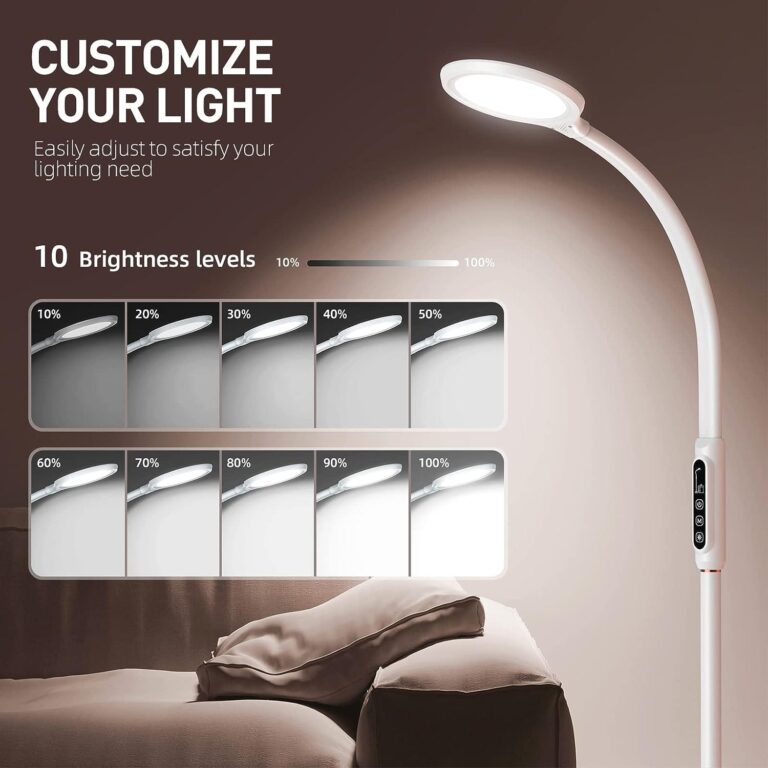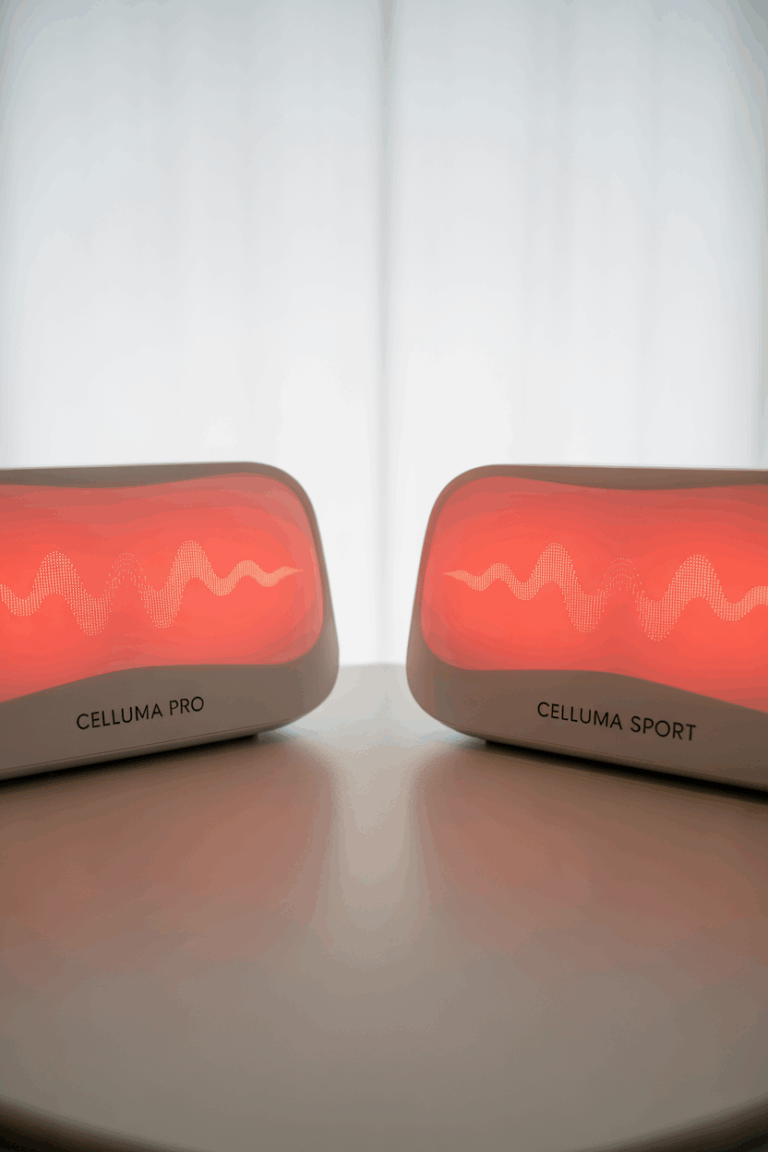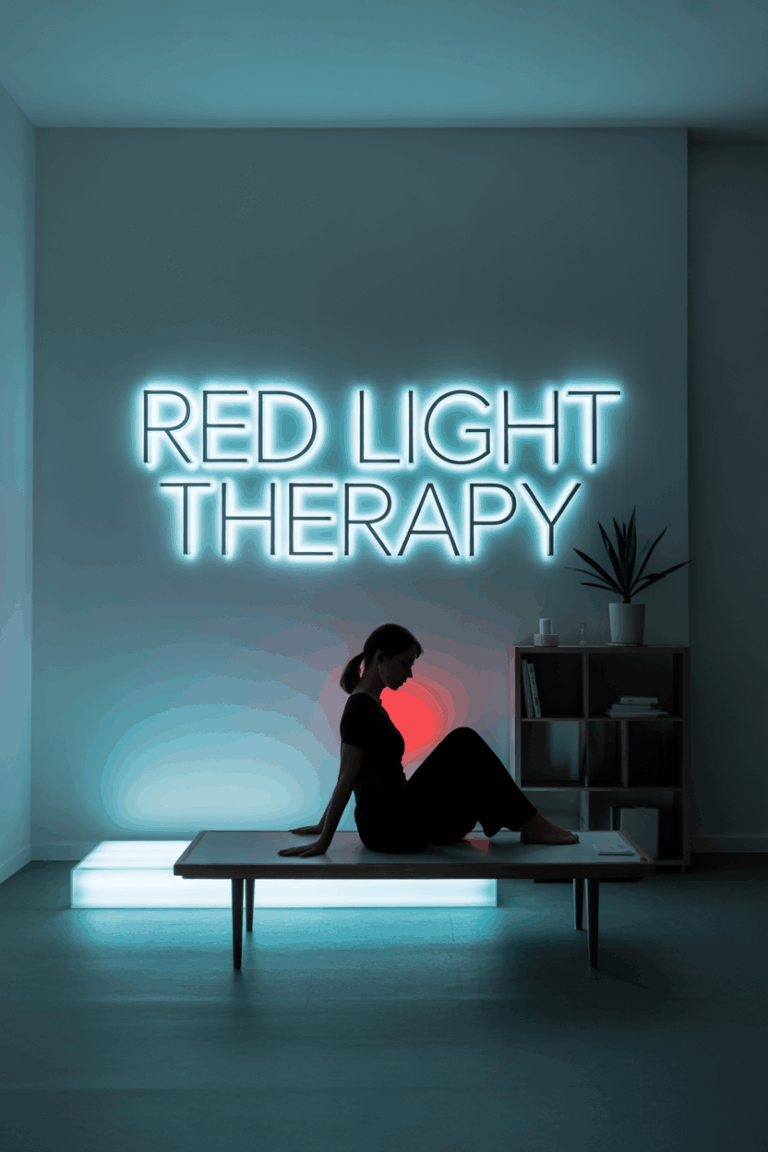Can Any Red Light Be Used for Red Light Therapy? Find Out

Why Can’t I Just Use a Regular Red Light Bulb?
The healing power of red light therapy doesn’t come from the color we see, but from the invisible energy of specific light wavelengths. Real therapy relies on this light energy reaching deep into your cells to spark a natural healing response.
For red light therapy to work, it must deliver very specific wavelengths. Scientific studies show the most benefit comes from red light between 630-670 nanometers (nm) and near-infrared light between 810-890 nm.
A standard red lightbulb, like an incandescent, fluorescent, or typical LED, isn’t built to produce these precise wavelengths. If you feel any therapeutic effect from one, it is purely by coincidence, not by design.
Also, many common bulbs, especially incandescent ones, produce a lot of heat. If you feel warmth during a session, your cells might be getting agitated instead of absorbing the light they need for repair, which defeats the purpose.

The bulb must emit these precise wavelengths with enough intensity, or power density, to give you a helpful dose in a reasonable time. This is why a simple red object like clothing, a picture, or a phone app offers no therapeutic value.
Painting a bulb red only filters the visible light; it does not change the actual wavelengths it emits. To ensure you’re getting a real treatment, you need a lamp that specifies its wavelengths and power density (in mW/cm²).
It is simpler and more effective to choose a bulb built specifically for health and wellness.
Can a Red Screen on Your Phone Provide Real Benefits?
You might wonder if setting a red wallpaper on your phone or using a red screen app could offer some benefits. While looking at a color can have a positive effect on your mood, this is not the same as red light therapy.
The visual experience of color is part of color psychology, which can influence mood and emotion. However, it does not create a physical change at the cellular level.

True red light therapy, also called photobiomodulation, requires light to meet specific criteria for wavelength and energy output. This is what allows the light to penetrate the skin and be absorbed by your cells.
A phone screen simply cannot produce the narrow-band wavelengths or the intensity needed to have a biological effect. Any benefits you get from a red screen are purely psychological, not physiological.
Could Your Plant’s Grow Light Also Work for You?
It’s a clever question: can a grow light for your plants also work for you? Sometimes, the answer is yes, because the wavelengths that help plants thrive can also be beneficial for humans.
Specifically, many grow lights use 660 nm (red) and 850 nm (near-infrared) light, which are both highly effective therapeutic wavelengths for people.

However, you must be careful. Some grow lights contain other wavelengths that are not safe for human use. Always check the device’s specifications before ever using it on your body.
CAUTION: DO NOT USE GROW LIGHTS WITH ULTRAVIOLET (UV) WAVELENGTHS. UV light is known to be damaging to both your skin and eyes.
Many grow lights also contain blue light, which is useful for treating skin conditions like acne but can harm the eyes and disrupt sleep. For example, the Mars Hydro SP3000 contains beneficial red and infrared light but also dangerous UV wavelengths, making it unsuitable for personal therapy.
Isn’t Natural Sunlight a Better Option?
Sunlight is a wonderful source of full-spectrum light that includes the therapeutic red and infrared wavelengths our bodies need. So why not just spend more time in the sun?

While that sounds ideal, many people cannot get enough sunlight. Your location, lifestyle, or even the local weather can make consistent sun exposure difficult.
This is where red light therapy offers a powerful alternative. It allows you to get a concentrated dose of specific, helpful wavelengths without the risks of harmful UV rays, like skin damage.

It’s important to remember that red light therapy does not help your body produce vitamin D. That essential process requires UV light from the sun.
The unique benefit of red light therapy is its ability to support your mitochondria, the powerhouses of your cells. As we age or get injured, mitochondrial function can decline, but red and infrared light helps revive them and boost cellular energy (ATP) production.
While sunlight provides some of this light, a targeted 15-minute therapy session delivers a consistent, powerful dose to help you reach your wellness goals.
References
Are Lasers More Effective Than LEDs for At-Home Therapy?
For personal, at-home red light therapy, lasers are not better than LEDs. Both are capable of producing the same wonderful health benefits for your skin, muscles, and pain relief.

The key is delivering the correct wavelength and dose. Red light therapy is a low-energy treatment where the goal is to go “low and slow,” allowing photons to be gently absorbed by the cells.
High-energy devices like lasers can actually be less effective. Their intense, focused light can bounce off the skin or create too much heat, which reduces absorption and limits the benefits.

The most important factor is achieving the right dose, measured in joules. A powerful laser might deliver this dose in seconds, while an LED panel might take 15 minutes, but the biological effect is the same.
For home use, LEDs have several clear advantages. They are safer and diffuse light gently without any risk of burning the skin.
LED devices are also much cheaper and more widely available, making this effective therapy accessible to everyone.
Do Cheaper Red Light Devices Really Work?
You absolutely do not need to buy an expensive lamp to experience the amazing benefits of red light therapy. Yes, cheaper devices can and do work effectively.

However, the price tag alone doesn’t determine effectiveness—the technical specifications do. A low-cost lamp can perform just as well if it meets two critical criteria.
First, it must emit clinically proven wavelengths. Look for devices that specify ranges like 660 nm for red light and 850 nm for near-infrared light. A generic “red” light without this detail won’t work.
Second, the lamp must have sufficient power density, or irradiance. This ensures it can deliver a therapeutic dose of light energy in a reasonable amount of time.
When you’re shopping for a device, look past the price at first and focus on the science. If a brand provides clear data on its wavelengths and power density, it’s a great sign that you’re getting a tool that will truly support your health.

Can You Build Your Own Red Light Therapy Device?
Yes, you can absolutely build your own red light therapy device, and a thriving community of enthusiasts does just that. This path can be rewarding if you have the right skills and knowledge.

The success of a DIY project depends on sourcing the right components. You must use LEDs that emit the correct therapeutic wavelengths and ensure your final device has enough power to be both effective and safe.
Building a device from scratch requires careful attention to electrical safety and design to avoid any risks.

For those interested, online communities like the Red Light Therapy DIY group on Facebook are fantastic resources. Members share plans, component sources, and valuable advice to help you succeed.
Resources
- Red Light Therapy DIY on Facebook
- Wendy Zelmer on YouTube
- Inflammation Coach
Do Therapy Devices Emit Harmful UV Light?
This is a crucial question, and the answer is a reassuring no. A properly designed red light therapy device does not emit any harmful ultraviolet (UV) light.

The electromagnetic spectrum is vast, and different wavelengths of light have very different effects on our bodies. Red light therapy uses only a specific and safe portion of this spectrum.
Harmful UV-A, UV-B, and UV-C light have very short wavelengths, under 400 nm. These are the rays that cause sunburn and can damage cellular DNA.

In contrast, therapeutic light uses much longer, gentler wavelengths of visible red (620-750 nm) and invisible near-infrared (750-1000+ nm). These wavelengths are completely safe for your skin and cells.
To ensure your peace of mind, always choose a device from a reputable company that certifies its products are free of UV radiation.
Do Red Light Therapy Devices Emit EMFs?
Concern about exposure to electromagnetic fields (EMFs) is valid, as we are constantly surrounded by them from cell phones, Wi-Fi, and other electronics.

Some red light therapy devices do emit low-level EMFs, which are different from the therapeutic light itself. These are generally considered safe, but their long-term biological effects are still being studied.
Any device that plugs into a wall outlet or has a cooling fan will generate some level of EMF. The intensity of these fields can vary greatly by design and quality.

If minimizing your EMF exposure is a priority, you have excellent options. Many manufacturers now design and certify their products as “low-EMF” or “zero-EMF” at the recommended treatment distance.
Alternatively, you can choose a battery-powered device. Portable lamps that use a battery or a simple USB cord are likely to have very low EMF emissions compared to larger models with fans or transformers.
References
Is Red Light Therapy Safe if You Have Cancer?
The relationship between cancer and red light therapy, also known as photobiomodulation (PBM), is complex and should be approached with caution.
Some studies have shown that PBM can be helpful in managing painful side effects of cancer treatments like chemotherapy, such as oral mucositis. However, applying light directly to a tumor is a different story.
Because red light therapy works by stimulating cellular activity and energy production, there is a theoretical concern that it could also encourage the growth of cancer cells.
In their paper on the subject, Dr. Judith Zech and her colleagues state, “Vigilance remains warranted to detect any potential adverse effects of PBM on cancer treatment outcomes and survival.”
This highlights the need for more research and professional guidance. If you have an active tumor or a history of cancer, it is absolutely essential to talk to your oncologist before trying red light therapy.
References
Your Checklist for Effective Red Light Therapy
As you explore your wellness options, remember that you cannot use just any red-colored light to get the health benefits of red light therapy.
The magic isn’t in what your eyes see, but in the specific, clinically-proven wavelengths of light that your cells absorb. These are typically red light (630-670nm) and near-infrared light (810-890nm).
A standard red lightbulb, a phone screen, or red-colored clothing simply won’t work. They don’t produce these precise wavelengths with enough energy to create a real biological effect in your body.
Effective and affordable options are widely available, making it easier to support your health. Always check a device’s technical details to ensure it delivers the right wavelengths and power.
By choosing a tool with proven science behind it, you can be confident that you are giving your body the support it needs to heal, recover, and feel its best.






